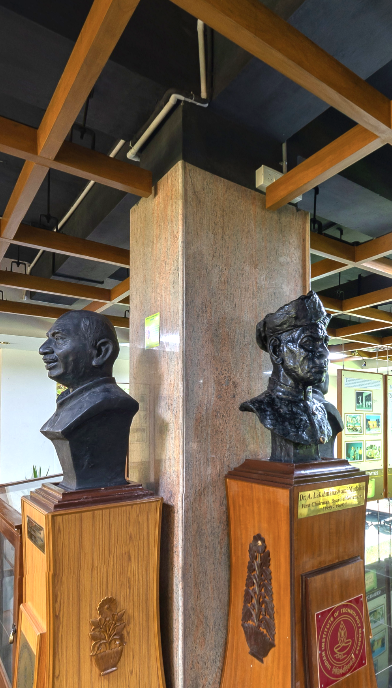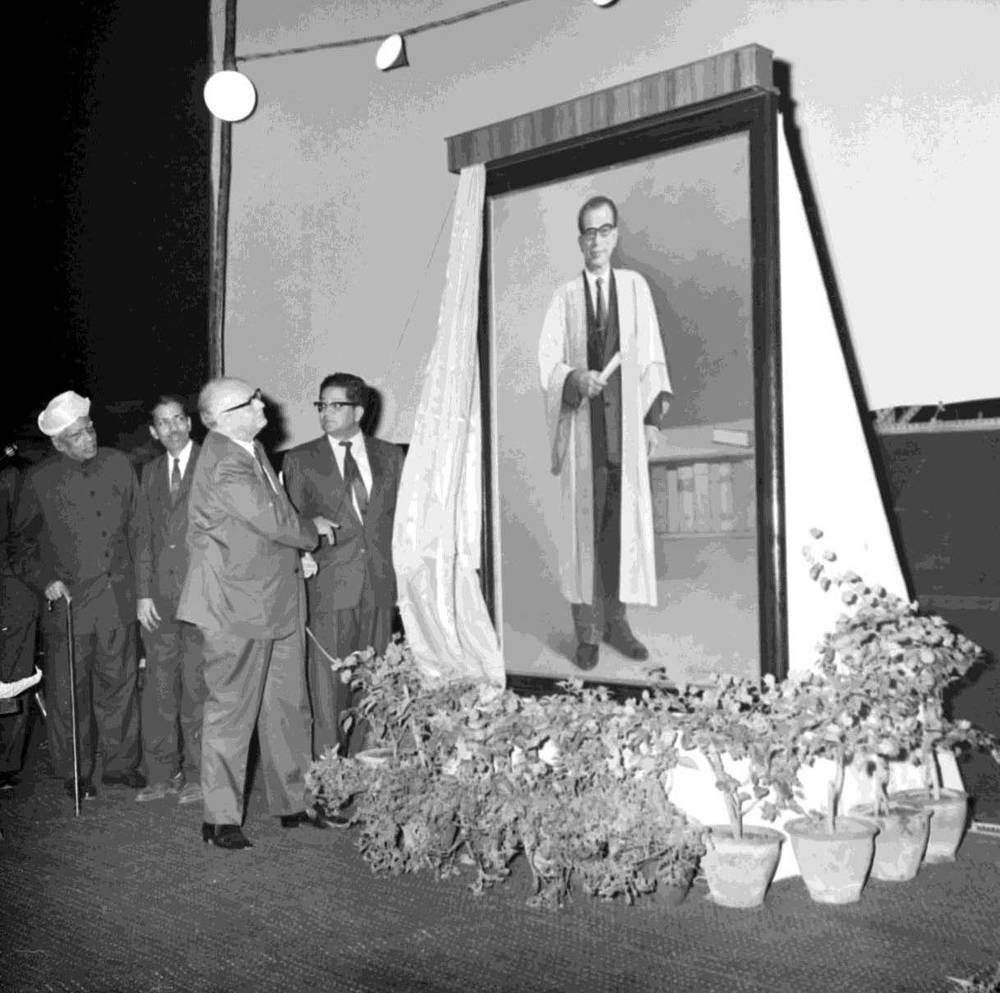
-
Questions, questions
Jan 08, 2017
Kumaran Sathasivam
The portrait of Prof. Sengupto, at the entrance of the Heritage Centre, is the tallest item on display here. As I had mentioned in my previous letter, this painting is a re-creation of another, a portrait created many years ago that was damaged by the combined action of moisture and termites.

The unveiling of the portrait of the first Director, Prof. B. Sengupto.
When was the original painted? Who painted it? Who unveiled it? When? Where?
A search for the answers to these questions was instructive not only about the painting itself but about the ways of history itself. One of the questions was readily answered by a search through the photographs at the Heritage Centre.
There is one set of negatives entirely devoted to the unveiling of the portrait, and these pictures clearly show that the venue was the Open Air Theatre. It is also clear that the function was held after sunset for the sky is dark. Prof. A. Ramachandran, second Director of IIT Madras, Dr. A.L. Mudaliar, first Chairman, Board of Governors, and Prof. S. Sampath, first Deputy Director, are clearly recognisable.
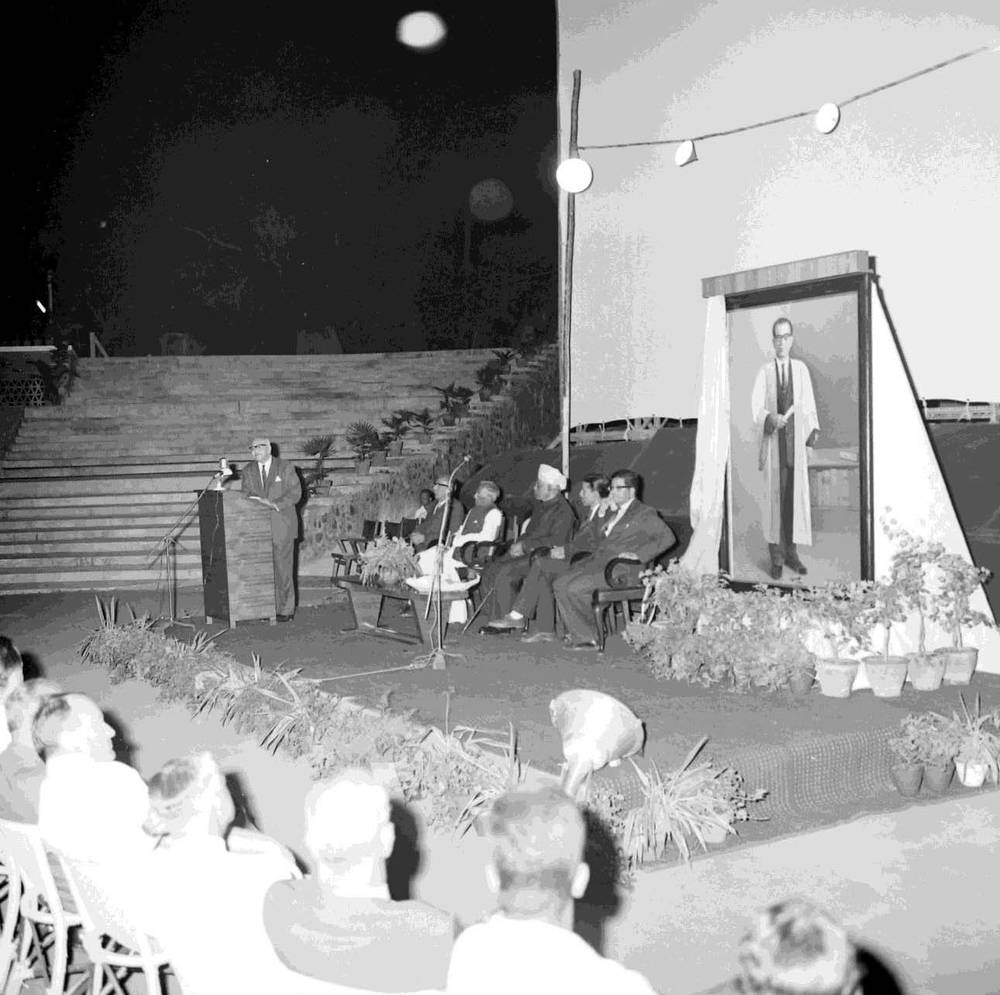
The venue is clearly OAT. What was the date?
There are no details, however, on the negatives themselves, on the envelope containing the negatives or within the pictures (by way of a banner, for example).
When was the event held? No mention of the event could be found in the Annual Number editions available at the Heritage Centre. It was also somewhat unlikely that the annual reports of the institute would have recorded the unveiling, and at any rate an exhaustive search would have been very time-consuming.
Now, Prof. Ramachandran was Director of IIT Madras from December 1967 to May 1973. And Dr. A.L. Mudaliar was the Chairman, Board of Governors of the institute from January 1959 to January 1969. The period when they were both at IIT was thus just a little more than one year, corresponding to the calendar year of 1968. So the portrait was probably unveiled some time in 1968. This was good progress, but could a more specific date be found? And who was the gentleman in a suit who actually unveiled the painting?
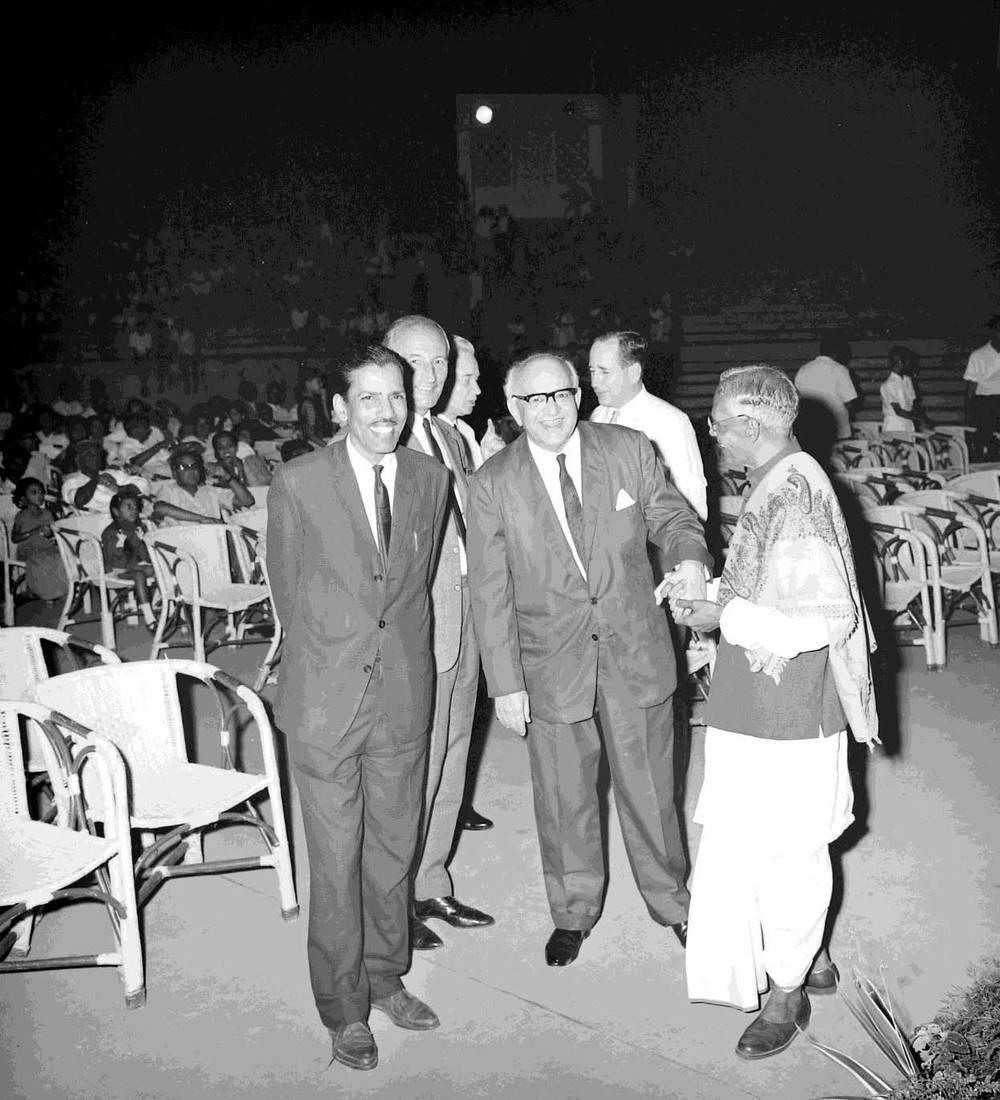
Clearly, he was a distinguished guest of the institute. Also, one could hazard a guess from his appearance that he was not Indian.
I went back to the annual reports. The 1967–1968 annual report did carry a list of important visitors to the institute. Among them were a host of German visitors.
As it happens, the first of these visitors after Prof. Sengupto’s tenure as Director was Dr. Lehnartz, President of DAAD. How was one to obtain a photograph of Dr. Lehnartz and to determine if the person unveiling Prof. Sengupto’s portrait was him? A Google image search for ‘Dr. Lehnartz DAAD’ yielded a small photograph:
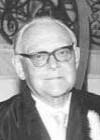
This was Dr. Emil Lehnartz, President of DAAD from 1960 to 1968, and the photograph was on DAAD’s website. I thought that I did not need to look any further. But I was not absolutely certain. So I asked DAAD for confirmation.
Soon enough, they wrote back to say that they had compared the pictures at the Heritage Centre with the photos they had of Prof. Lehnartz in their archive. They said that they were ‘pretty sure’ that it was the same person. They even sent a photo of Prof. Lehnartz taken at a meeting of DAAD scholars in Travemünde, a German coastal resort on the Baltic Sea, in 1967:
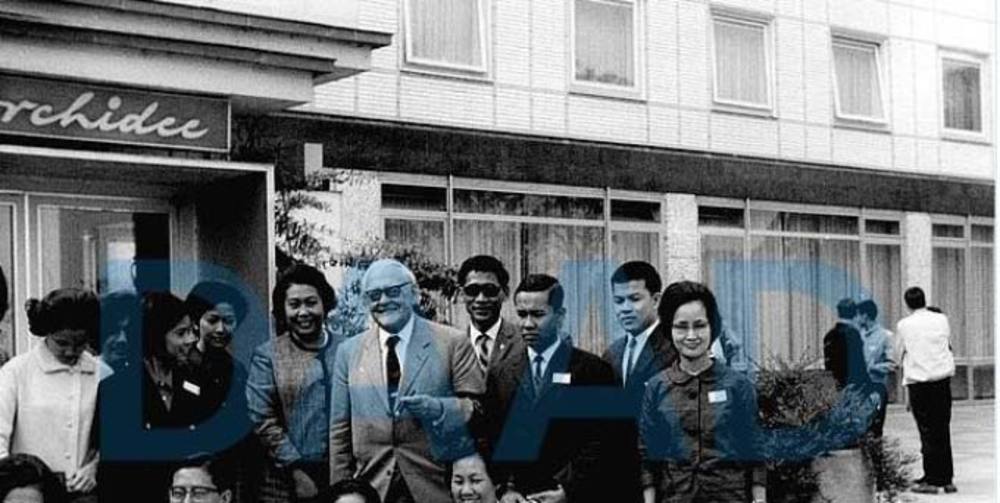
That clinched it—now two questions had been answered in one stroke: (1) the one about who had unveiled Prof. Sengupto’s painting and (2) the question about when the event at the Open Air Theatre had taken place—the 1967–1968 annual report documented Dr. Lehnartz’s visit to the institute as having taken place on 19 January 1968.
But one thing leads to another. More questions arise. Who is the prominent person in the pictures in a dhoti, waistcoat and shawl?
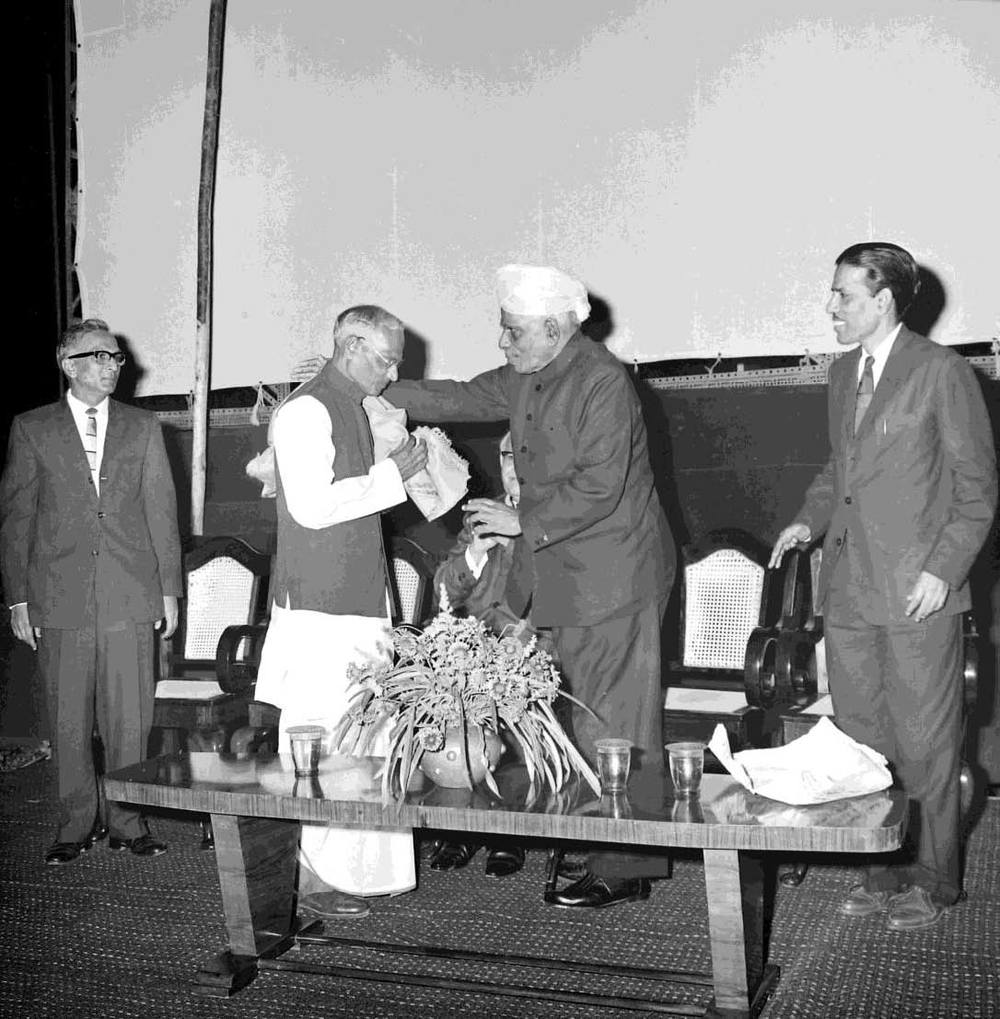
And where was the painting kept in the institute until it was brought to the Heritage Centre? I have not been able to find the answers to these questions yet.
As the English poet and novelist Thomas Hardy might have expressed it, questions arise, questions linger.
Can any of our alumni from the batches of the late 1960s and early 1970s answer these questions? If yes, a clearer picture would emerge, so to say.
Your response to Letter from Heritage Centre is welcome. Please send mail to heritage@iitm.ac.in
The Heritage Centre is located in the ground floor of the Administration Building, IIT Madras. It is open on weekdays from 9.30 am to 5.30 pm.
- Contribute
to the Centre -
Monetary
Support - Digital
Material

